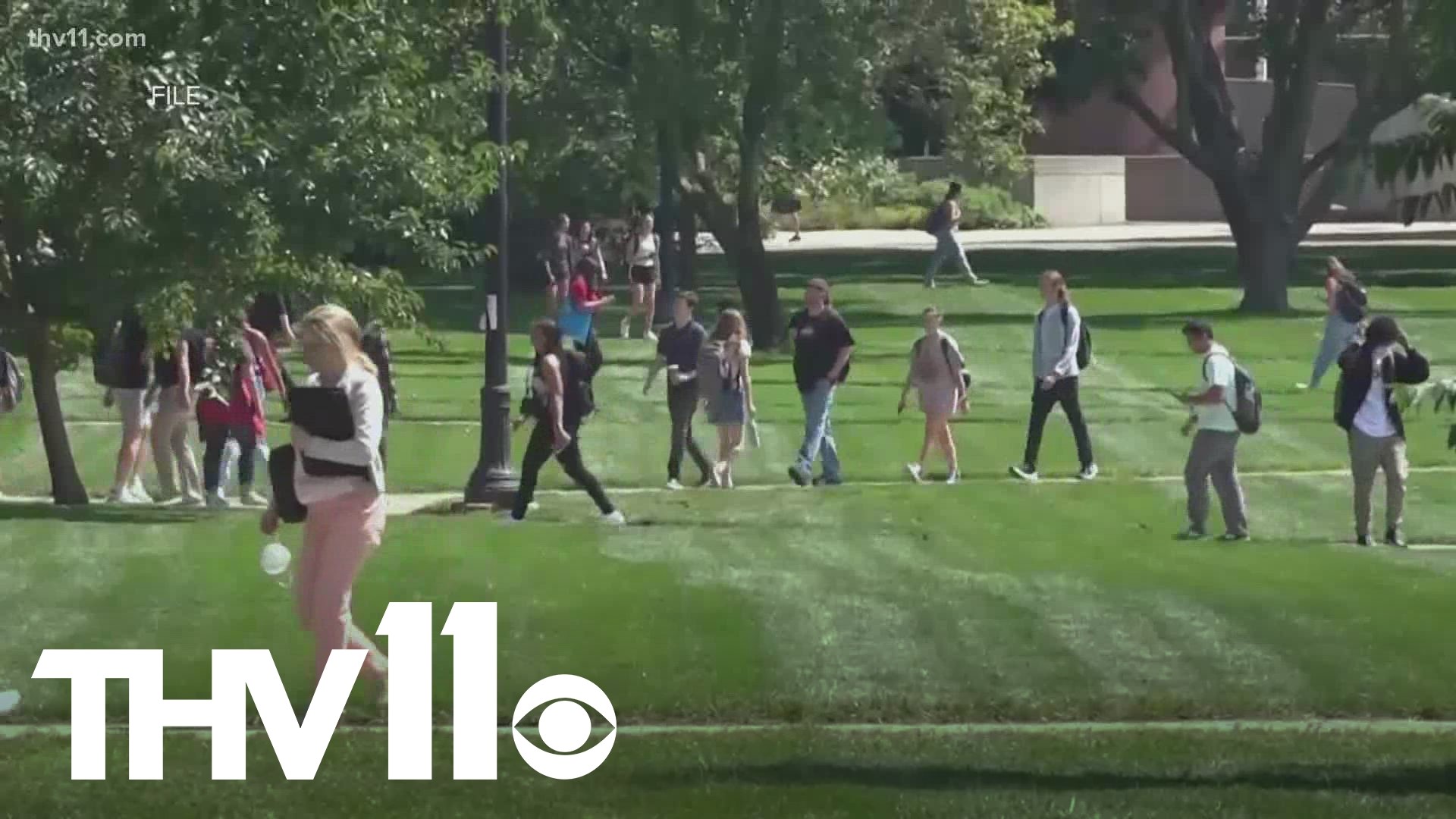LITTLE ROCK, Ark. — A week after President Biden made the big announcement of a student loan debt relief plan, many questions have been left unanswered.
No matter who you ask, everyone has been impacted by the Biden administration's plan to cancel student loan debt in some way.
Derrick Davis, a senior at the University of Arkansas at Pine Bluff, said that he's already preparing for a problem millions of Americans have faced.
"I had a brain scramble about how will I actually be able to pay those loans back," Davis said.
In his announcement last week, President Biden said that black students are often more likely to take out larger loans.
For Davis, the challenge to pay off his loans hit home.
His mom passed away during his sophomore year of college— but that didn't stop student loans from adding major stress to his life.
Loans, of course, were a big way for him to help pay for school.
"If I wouldn't have to pay so much or take out as many loans, I will be able to enjoy college more," he explained.
He accumulated nearly $23,000 in student loan debt and said that he sees the loan forgiveness plan as very good news.
"It takes off a lot of stress," Davis said.
The question now is what comes next for him and the millions of others looking to find financial relief?
The Department of Education recently released new guidance on when borrowers can expect to see relief.
They also added that the federal student loan forgiveness application will be available in October.
Applicants must complete the process before November 15, 2022, in order to get relief before payments resume in January 2023.
Borrowers are advised to apply before November 15, 2022, before the payment pause expires on December 31, 2022.
Nearly 8 million borrowers may be eligible to receive relief automatically since relevant income data is already available to the U.S. Department of Education.
While the news has been hopeful for many, others like Nate Hopson aren't totally on board.
"When I got the official news, I mean, I was definitely jumping up and down. I was ecstatic," Hopson said. "I definitely didn't think it was the right move on like a macro level."
He graduated in 2017 with about $20,000 of student loan debt— but isn't necessarily convinced that loan forgiveness addresses a bigger issue.
"If we really look down into it, it's just tuition costs are just rising higher and higher," Hopson explained.
The average cost of a four-year education has almost tripled and is now nearly $29,000 a year.
"I understand those people who didn't go to college, or they did pay off their students loans and they feel like, they're going to have to carry the burden and pay off their taxes for people who are getting their relief," Hopson said.
According to the Department of Education, your best bet is to try to have your application in by November 15 at the latest.
Applications will be processed beyond that date, but loans will enter repayment before they are forgiven if you wait until after the deadline.
The final deadline for relief will be December 31, 2023.
If you would like to be notified when the application is open, click here:

